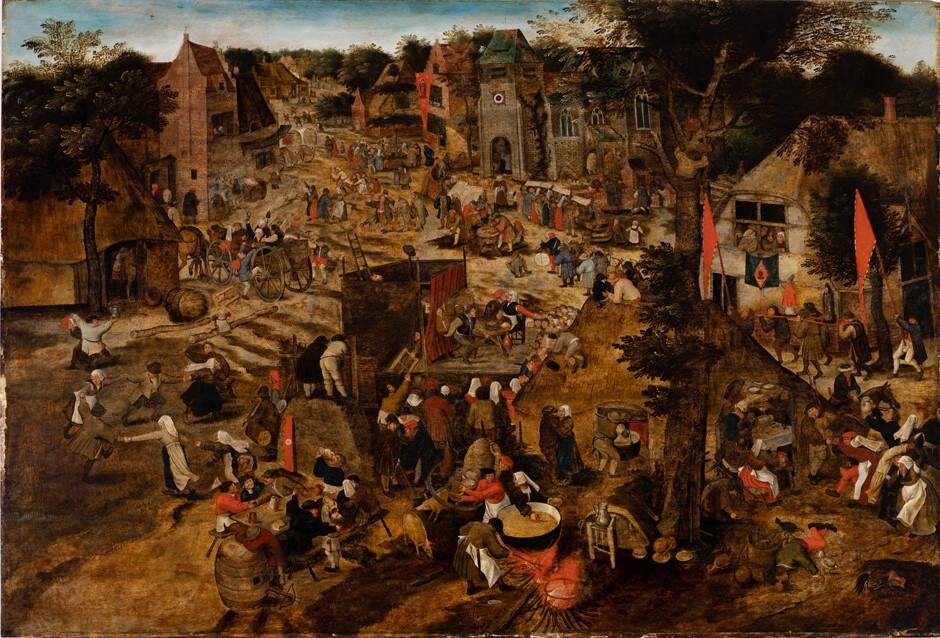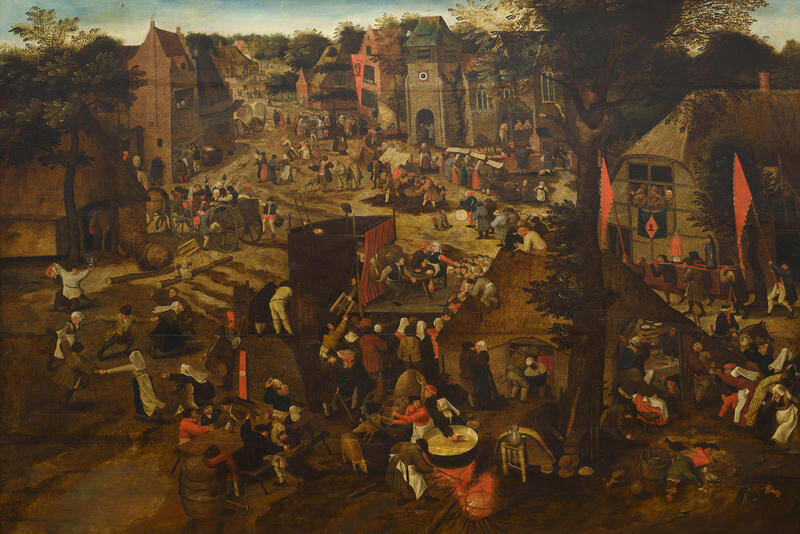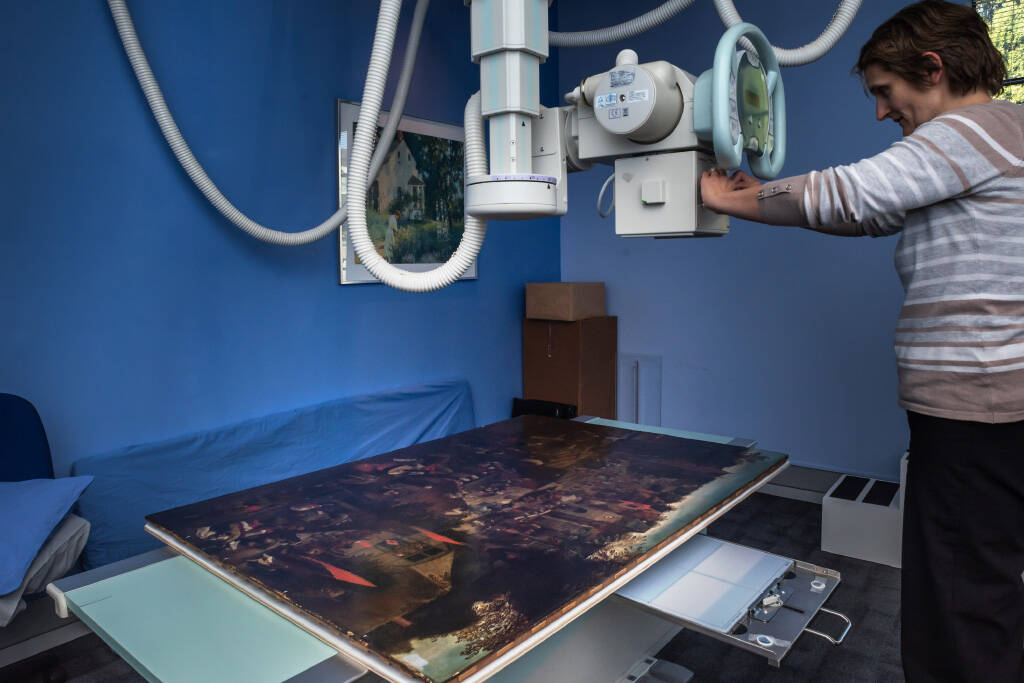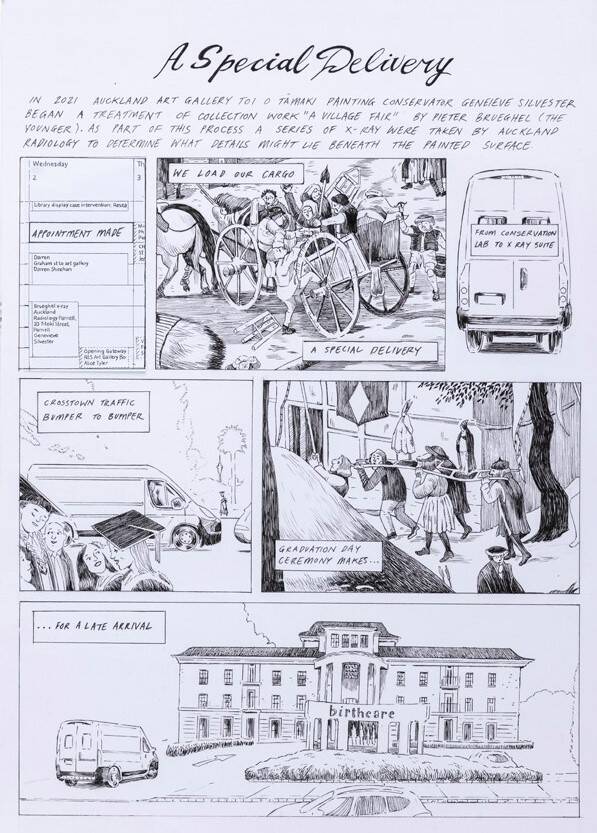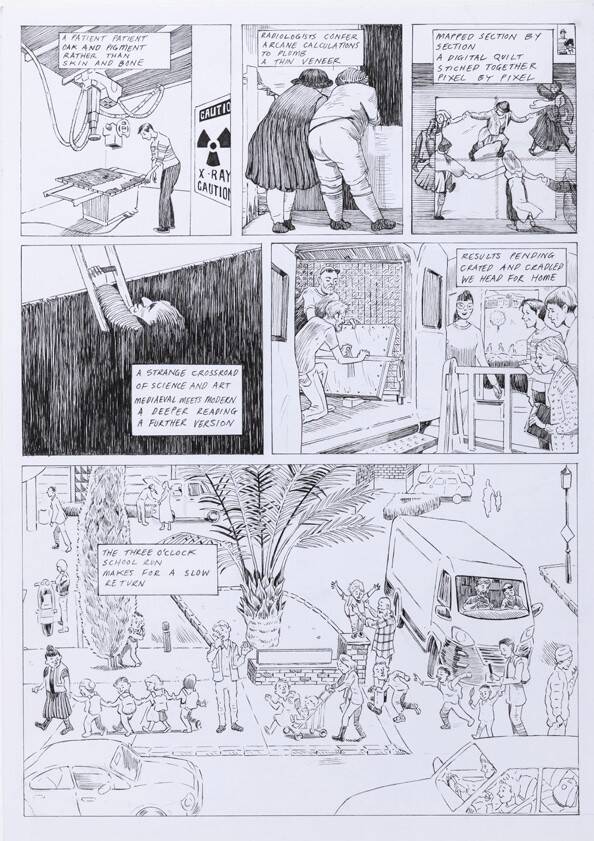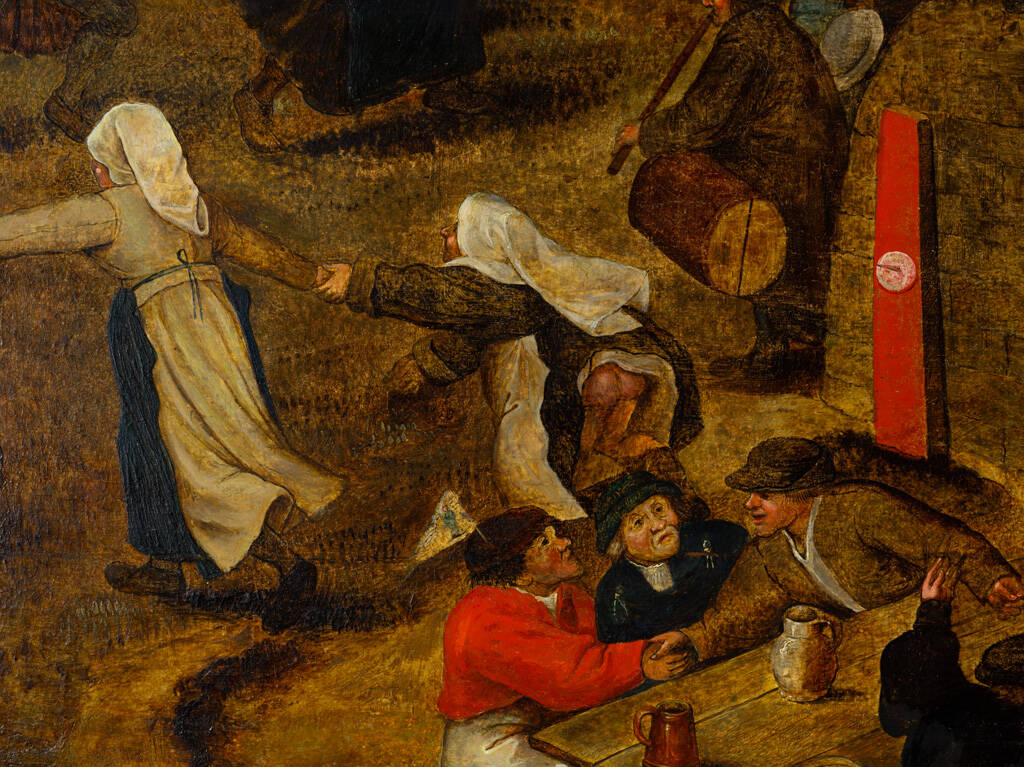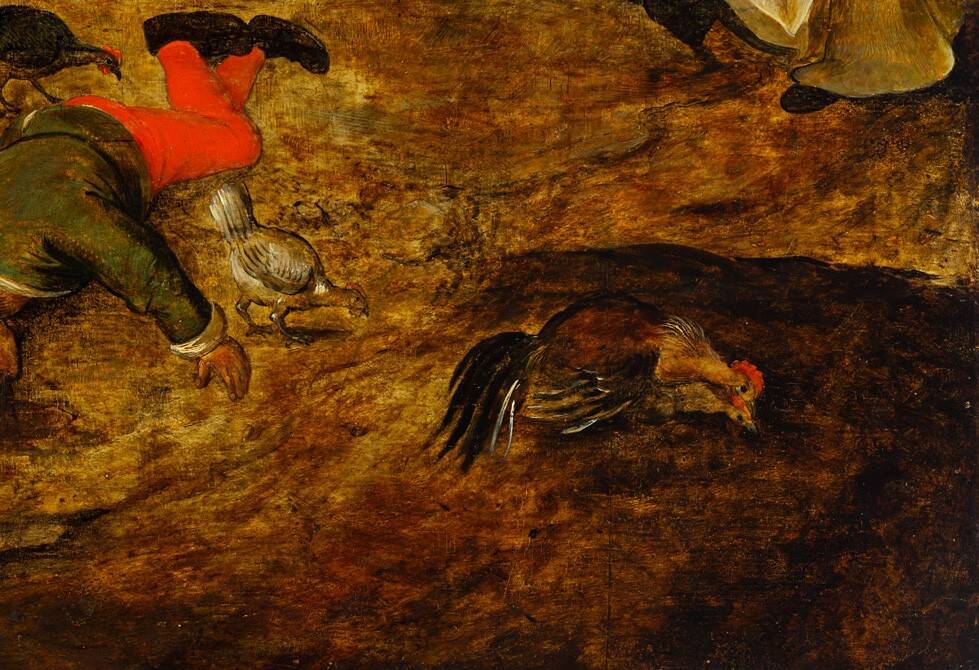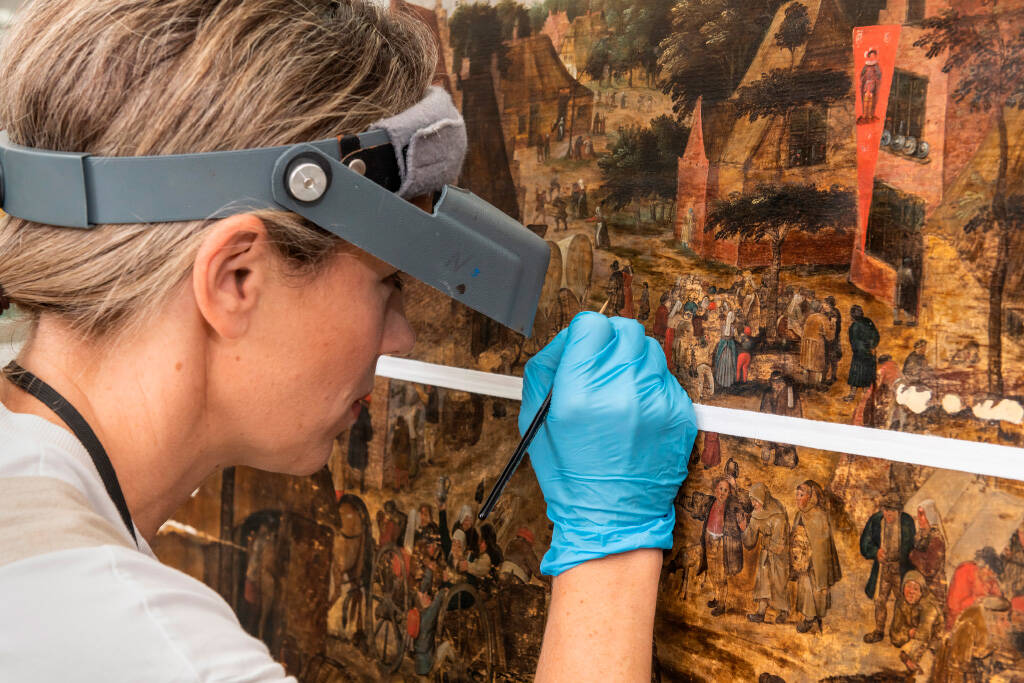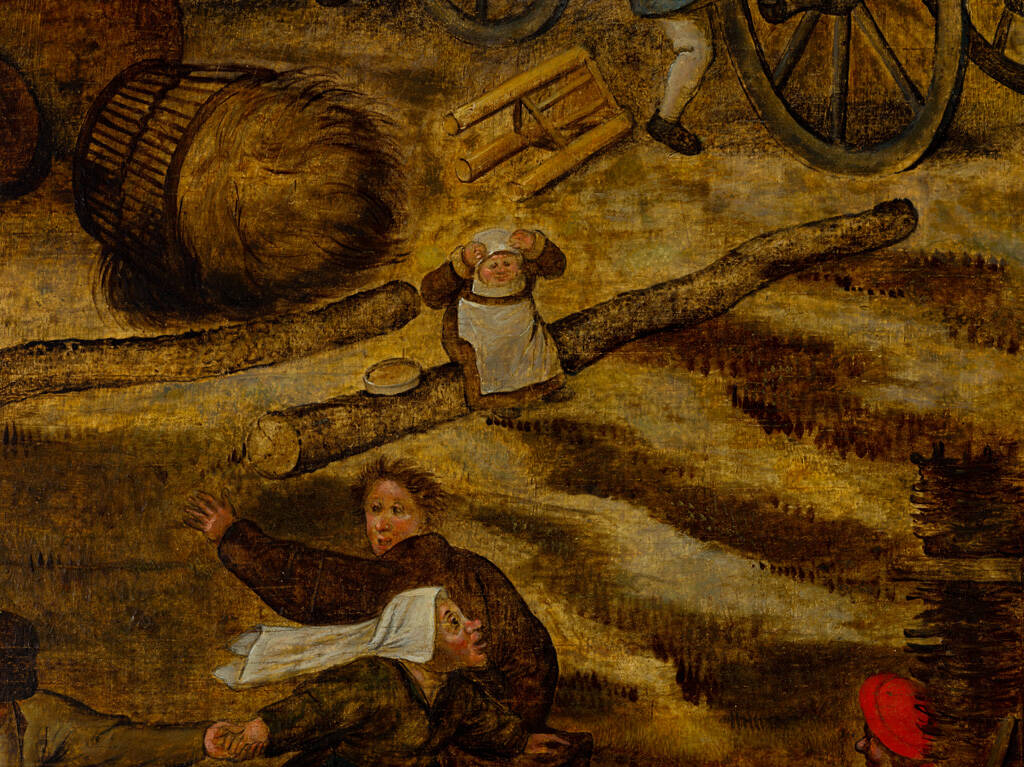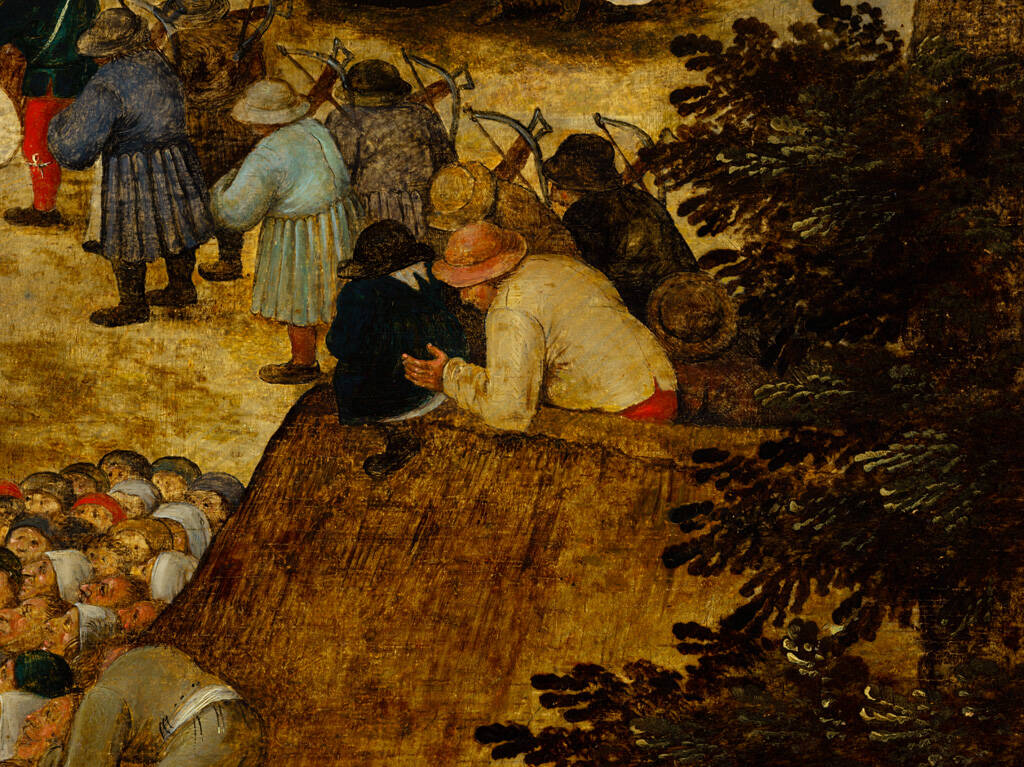There are areas where we’ve been able to more accurately interpret – and reinsert – details that were lost through over-cleaning in the past or through splits appearing in the work over time.
To do this, I looked at the six other versions of this painting by Brueghel’s workshop and the remnants of paint to figure out what should have been there. I had this complicated map like they do on detective TV shows where you put Post-it Notes and string up and try to connect things – it was a tangled little web. Some had this detail and one didn’t; this one had a bare bottom, and this one didn’t.
It was very complicated working out the connections between this core corpus of six works. But it was possible, and there were two works that stood out as being most similar to the Gallery’s work, which became my primary source for determining what should be there: one in the State Hermitage in St Petersburg, and the other in the Museum of Beaux Arts in Brussels.
The table at the front of the scene is an example of where we’ve been able to add details back in. There’s a split that runs right through the work and there was a lot of loss and abrasion on the table.
Upon removing the overpaint we could see what should have been there, but only the remnants of it. In looking at the other close versions of the painting, we were able to see ‘Oh that should have been a vase’, ‘This should be a pie’, and we were able to put these back into the painting using a combination of looking at those copies and then also our original work. And now it fits better into the group of six [versions of the scene].
